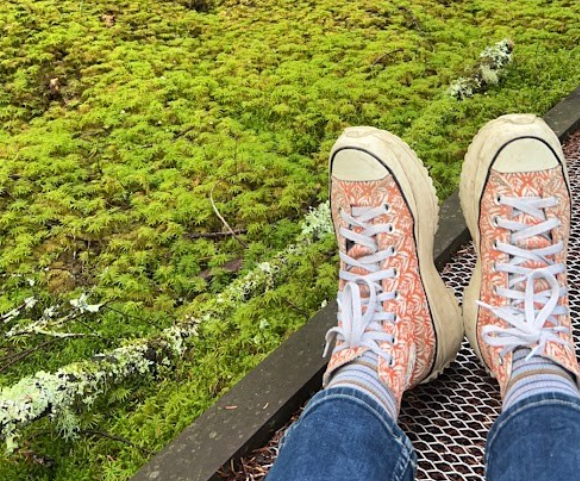Though it may be cold and rainy, autumn is one of the best times to visit the bog and see it in its full glory. Shadow Lake Bog looks completely different in fall than in summer. By comparing these differences that we can come to a better understanding of the systems at play in our own backyards! Colorful mushrooms pop up from unexpected places, puddles re-form around gracefully drooping skunk cabbages, and we get a front row seat to observe mosses “building” the bog right in front of our eyes.
While many plants have already lost their leaves and begun dormancy, mosses are enjoying one last growth spurt before freezing temperatures. Mosses thrive in the acidic and nutrient deficient environment of the bog. Because they absorb these nutrients from the air around them, their only major limiting ingredient is inadequate moisture. This means that many mosses go dormant during the hottest months.
When the fall rain finally comes, it is incredible to watch as the browns hydrate to display a wide array of vibrant, color blocked greens. Each different color represents one of more than 30 different species of moss, each of which has its own techniques to prevent the others from taking over. Mosses, much like siblings, are not very good at sharing. Instead, plants evolve to specialize in certain niches which are defined by minute differences in the shade or moisture. Even with this extreme level of specificity, mosses are still competing with each other for space, so now is a time where they quickly colonize any new available space like fallen branches, or patches of newly dead moss. The rapid growth of mosses over anything that isn’t moving, in an acidic environment with very little decomposition, is what allows layers of dead partially decomposed material, called peat, to accumulate!



Recent Comments